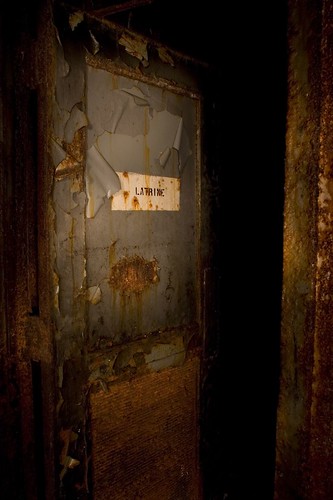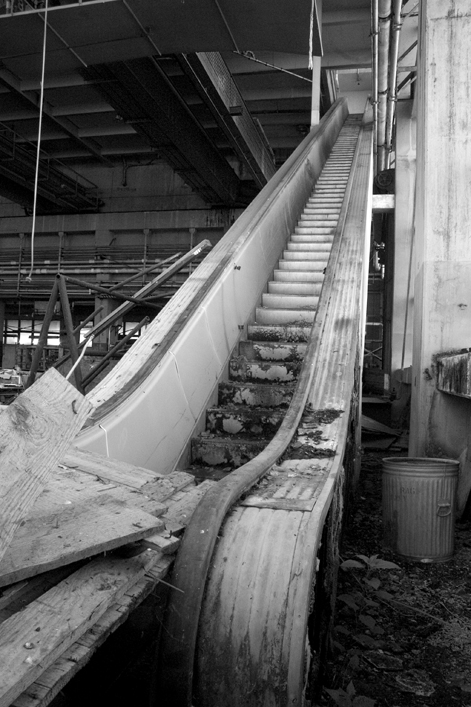Inside a Titan 1 Missile Base
 Show on map June 15th, 2007
Show on map June 15th, 2007
By Jonathan H

Titan bases contain over 2,500 feet of underground passages, built to withstand a nuclear attack as close as 3,000 feet away (photo copyright Jon Haeber).
Over 1/2-mile of underground passageways; three 150-foot-deep launch silos; PCBs, lead paint, zinc, cadmium, mercury — it’s a toxic soup, stagnant for over 40 years.

Photo courtesy SiloWorld.com
In 1962, these gigantic underground complexes began to take shape. Menacing images of power domes 150 feet across and two stories high put anyone lucky enough to see these underground cities in awe. They were said to support a 150-man army for 30 days. They could withstand a nuclear blast from less than 3,000 feet away.

Photo copyright Jon Haeber
And today, frozen icicles of contaminated groundwater hang from its rusticated quonset-hut-like ceilings. Breathing the air inside of a Titan base is not recommended. One breath will make you wonder how anything could survive within it.
The U.S. had 54 of these silos dotting the Midwest and West Coast. From Beale A.F.B in California to Lowry A.F.B. outside of Denver, CO these places were once the bargaining chips in a Cold War standoff with the Soviet Union. These were missiles that could travel across the upper atmosphere at speeds 25 times the speed of sound. They could hit targets over 6,000 miles away and deploy a 4 megaton nuclear warhead, a yield of destructive force that is theoretically 200 times the 20 Kt bomb dropped on Hiroshima.

Photo copyright Jon Haeber
Today, only an empty shell remains. Some are filled in with water, others turned into tourist destinations; and still others on the market as potential “wine cellars or underground rock climbing gyms”
There’s one thing this author knows: Walking through an abandoned Titan missile base is a life-altering experience. Straddling the precarious catwalks and 2,500 feet of underground passages, looking down into the abyss of the 155-foot launch silo, and donning a P95 respirator to protect yourself from the toxic fumes — all of it makes you feel as if you’re walking in an alien environment and that you’re one of the few lucky people to have seen this modern wonder. At one time, these places were the landmark sites of the U.S. military industrial complex. Today, they only represent the incredible amount of money spent (wasted?) on the U.S. war machine.
Further Research
- KOMO TV article on Washington Titan Base for Sale http://www.komotv.com/news/archive/4120821.html
- Denver Westword article on exploring a Titan base
http://www.westword.com/2003-11-20/news/search-party/print - Missile Threat Titan 1 Statistics
http://www.missilethreat.com/missilesoftheworld/id.171/missile_detail.asp



 Geography is sometimes right in front of you — especially if you work in a cubicle.
Geography is sometimes right in front of you — especially if you work in a cubicle.





